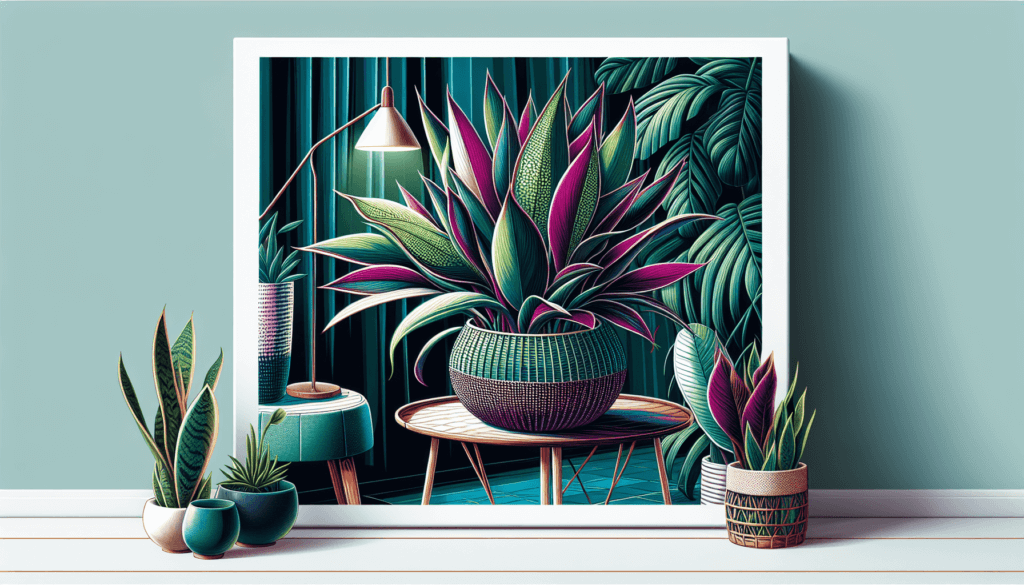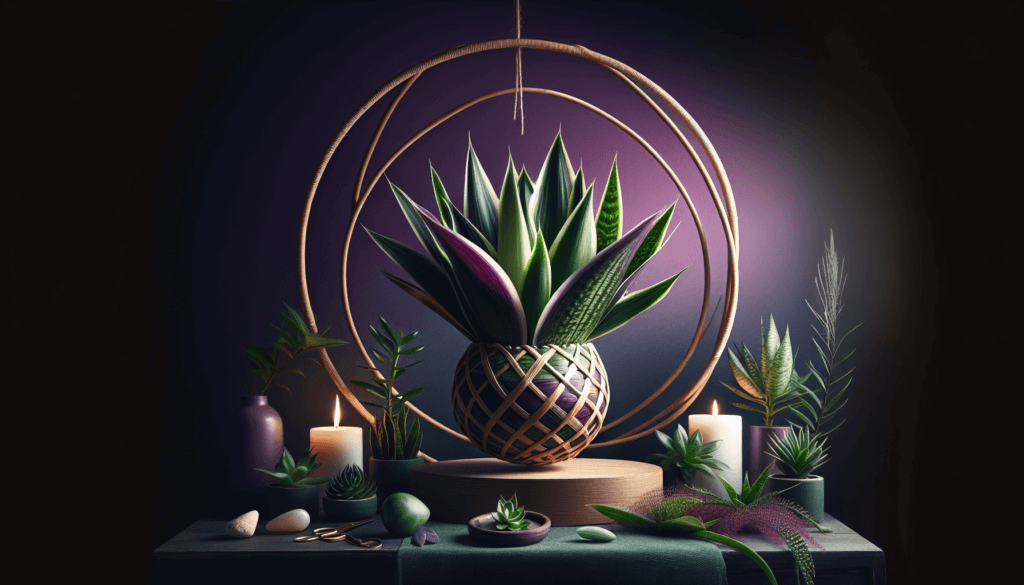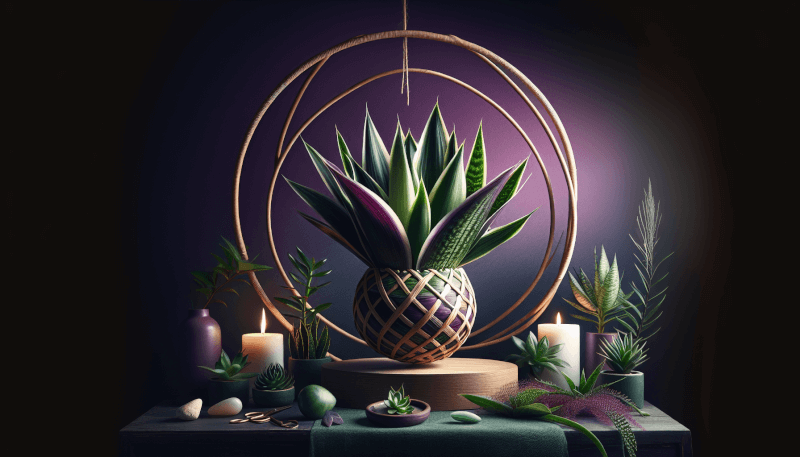Are you looking to add some greenery and vibrancy to your home? Look no further than the Moses in a Cradle plant! This charming plant is not only visually appealing but also easy to care for, making it a perfect option for both experienced gardeners and beginners. In this article, we will provide you with all the necessary tips and guidelines to ensure your Moses in a Cradle plant thrives in its new environment. From sunlight requirements to watering schedules, we’ve got you covered. Get ready to embrace the beauty of nature with these simple and effective care techniques for your Moses in a Cradle plant.

Choosing the Right Plant
Choosing the right plant for your home is an important decision. It’s essential to consider factors such as the climate you live in and the condition of the plant you are selecting. By making thoughtful choices, you can ensure that your plant thrives in its new environment.
Consider the Climate
One crucial aspect to consider when choosing a plant is the climate of your region. Different plants have different temperature and humidity requirements, so it’s essential to select one that can withstand the conditions in your area. If you live in a warm and tropical climate, plants such as the Moses in a Cradle, with their vibrant colors and love for humidity, will flourish. On the other hand, if you reside in a cooler climate, you may need to provide extra care and attention to ensure the plant survives.
Selecting a Healthy Plant
When choosing a plant, it’s important to assess its health. Look for a Moses in a Cradle with vibrant green leaves, sturdy stems, and no visible signs of damage or disease. A healthy plant is more likely to adapt well to its new surroundings and offer a more enjoyable gardening experience. Don’t hesitate to ask nursery staff for assistance when selecting a plant, as they can provide guidance based on their expertise.
Light Requirements
Proper light exposure is vital for the growth and beauty of your Moses in a Cradle plant. Taking into consideration the placement near a window and understanding the difference between filtered light and direct sunlight can help you optimize care for your plant’s light requirements.
Placement near a Window
Moses in a Cradle plants thrive in bright, indirect light. Placing them near a window where they can receive ample sunlight is ideal. South-facing windows tend to provide the brightest light, while east and west-facing windows offer more moderate light levels. If your home has limited access to natural light, consider using artificial grow lights to supplement the plant’s light needs.
Filtered Light vs Direct Sunlight
While Moses in a Cradle plants enjoy bright light, they can be sensitive to direct sunlight. Direct sun exposure can scorch their leaves and cause damage. To prevent this, it’s best to place them in an area where the sunlight is filtered through sheer curtains or indirectly reaches the plant. Keep an eye on the leaves for any signs of burning or discoloration, as this can be an indication that the plant is receiving too much direct sunlight.
Watering
Proper watering is crucial for the health and vitality of your Moses in a Cradle plant. Understanding the plant’s watering schedule and ensuring proper drainage in its pot can help you avoid issues such as root rot and dehydration.
Proper Watering Schedule
Moses in a Cradle plants prefer consistently moist soil but are susceptible to root rot if their roots sit in standing water. As a general guideline, water your plant when the top inch of soil feels dry to the touch. It’s essential to strike a balance between not overwatering and not allowing the plant to become completely dry. Regularly check the soil moisture level and adjust your watering schedule accordingly.
Potted Plant Drainage
To prevent excessive moisture retention, ensure your Moses in a Cradle plant is potted in a container with drainage holes. Adequate drainage allows excess water to escape the pot, preventing the roots from sitting in water and potentially rotting. If your pot doesn’t have drainage holes, consider switching to a container that provides proper drainage or use a cachepot to hold the inner pot, allowing excess water to drain away.
Soil Requirements
The right soil mix and the addition of organic matter are essential for the optimal growth and development of your Moses in a Cradle plant. Ensuring that the soil is well-draining and rich in nutrients can contribute to the overall health and vibrancy of the plant.
Well-Draining Soil Mix
Moses in a Cradle plants thrive in well-draining soil. A combination of potting soil, peat moss, and perlite can create an ideal soil mix. These components help to retain adequate moisture while allowing excess water to drain away. Before repotting your plant, make sure the new soil mix is thoroughly mixed and free of compacted clumps to ensure proper drainage.
Adding Organic Matter
To enrich the soil and provide essential nutrients, consider adding organic matter to the potting mix. Compost or well-rotted manure can improve the soil’s fertility and structure, promoting healthy root growth and overall plant vigor. Incorporate organic matter into the soil mix during repotting or simply apply it as a top dressing. This addition will contribute to the long-term health of your Moses in a Cradle plant.

Temperature and Humidity
Maintaining the ideal temperature range and humidity levels is crucial when caring for your Moses in a Cradle plant. Providing appropriate environmental conditions will ensure that the plant thrives and remains happy and healthy.
Ideal Temperature Range
Moses in a Cradle plants prefer temperatures between 60 to 80°F (15-27°C). Avoid exposing your plant to sudden temperature fluctuations and drafts, as these can cause stress and damage its foliage. Keep in mind that colder temperatures might slow down the plant’s growth, while excessively high temperatures can lead to heat stress. Maintaining a stable and comfortable temperature range will help your Moses in a Cradle plant flourish.
Maintaining Humidity Levels
Moses in a Cradle plants thrive in humid environments. Adequate humidity can be achieved by grouping plants together, placing a tray filled with water near the plant, or using a humidifier. Regularly misting the plant’s leaves with water can also help increase humidity. Monitoring the humidity levels and making necessary adjustments can keep your Moses in a Cradle plant healthy and happy, preventing issues such as dry and curling leaves.
Fertilizing
Proper fertilizing can significantly contribute to the growth and overall appearance of your Moses in a Cradle plant. Selecting the right fertilizer and maintaining a regular fertilization schedule are crucial for providing essential nutrients.
Choosing the Right Fertilizer
When selecting a fertilizer for your Moses in a Cradle plant, opt for a balanced, water-soluble fertilizer with equal parts nitrogen, phosphorus, and potassium (NPK). This balanced composition promotes overall plant health and supports strong root development. Follow the instructions provided with the fertilizer for the recommended dosage and frequency of application.
Frequency and Application
Fertilize your Moses in a Cradle plant sparingly to avoid overfertilization, which can lead to burning the roots or causing nutrient imbalances. Generally, fertilize every two to four weeks during the growing season (spring and summer) and reduce the frequency to once a month or less during the dormant period (fall and winter). Dilute the fertilizer according to the packaging instructions before application. Applying fertilizer to slightly moist soil can enhance nutrient absorption and prevent root damage.
Pruning and Propagation
Regular pruning ensures the health and aesthetics of your Moses in a Cradle plant. Trimming dead or overgrown leaves and propagating from stem cuttings can help maintain the plant’s shape, encourage new growth, and provide you with extra plants to enjoy or share with fellow plant enthusiasts.
Trimming Dead or Overgrown Leaves
Periodically check your Moses in a Cradle plant for dead or yellowing leaves and prune them promptly. Removing these leaves not only improves the plant’s appearance but also prevents the potential spread of disease. Additionally, if your plant becomes overgrown or develops long, leggy stems, you can trim them back to encourage bushier growth.
Propagation from Stem Cuttings
Moses in a Cradle plants are relatively easy to propagate from stem cuttings. To propagate, select a healthy stem and make a clean cut just below a leaf node. Remove the lower leaves, leaving only a few at the top. Place the cutting in a glass of water or a well-draining potting mix until roots develop. Once roots have formed, transplant the cutting into a new pot, ensuring proper watering and care. Propagation allows you to expand your collection or share the joy of gardening with others.
Pests and Diseases
Like any plant, Moses in a Cradle plants are susceptible to pests and diseases. Being aware of common pests to watch out for and taking preventative measures can help ensure the health and vitality of your plant.
Common Pests to Watch Out For
Some common pests that may affect your Moses in a Cradle plant include spider mites, aphids, and mealybugs. These pests can cause damage to the foliage, inhibit growth, and spread to other plants. Regularly inspect your plant for signs of infestation, such as webbing, tiny bugs, or sticky residue on leaves. Taking immediate action upon detection can prevent the pests from spreading and causing further harm.
Prevention and Control Measures
To prevent pest infestations, regularly clean and inspect your plant, removing any dead leaves or debris that may harbor pests. Keep your plant in a well-ventilated area to discourage pests from settling. If you notice signs of an infestation, try using natural pest control methods such as insecticidal soap or neem oil. Follow the instructions provided with the product and treat the affected areas accordingly. In severe cases, consult with a professional or a reputable garden center for further assistance.
Repotting
Identifying when your Moses in a Cradle plant needs repotting and following the proper procedure is crucial for ensuring the plant’s continued growth and development.
Identifying When Repotting Is Needed
As your Moses in a Cradle plant grows, it will eventually outgrow its current container. Signs that your plant requires repotting include roots growing out of the drainage holes, the plant becoming top-heavy or unstable, or the soil needing frequent watering due to its inability to retain moisture. When you notice these signs, it’s time to consider repotting your plant.
Proper Repotting Procedure
To repot your Moses in a Cradle plant, choose a pot that is one size larger and has drainage holes in the bottom. Prepare the new pot by placing a layer of fresh, well-draining soil mix at the bottom. Gently loosen the root ball of your plant and place it in the center of the new pot. Fill the remaining space with the prepared soil mix, ensuring that the plant is at the same level as before. Firmly press the soil around the roots to remove air pockets. Water the newly repotted plant thoroughly and place it in its designated spot.
Decorative Use
In addition to the numerous benefits for your plant’s health and well-being, the Moses in a Cradle plant can also serve as a beautiful decorative element within your home. With its lush green leaves and unique color patterns, this plant can enhance the aesthetic appeal of any space.
Indoor Plant Display Ideas
Consider incorporating your Moses in a Cradle plant into a stylish indoor plant display. Grouping it with other plants of varying heights and textures can create an eye-catching arrangement. Alternatively, showcase it as a standalone piece on a side table or a plant stand. The vibrant leaves and striking appearance of the Moses in a Cradle plant are sure to draw attention and add a touch of natural beauty to your interior decor.
Complementing Décor Styles
Whether your home features a sleek modern design, a cozy rustic style, or a vibrant bohemian aesthetic, the Moses in a Cradle plant can effortlessly complement various décor styles. Its versatile appearance pairs well with neutral color schemes and acts as a vibrant focal point in spaces with bold, vibrant hues. Incorporating this plant into your home decor allows you to showcase your unique style while enjoying the many benefits of indoor gardening.
In conclusion, caring for a Moses in a Cradle plant involves considering the climate, providing adequate light and watering, ensuring proper soil conditions, and maintaining suitable temperature and humidity levels. Fertilizing, pruning, and preventing pests and diseases are essential for the plant’s health and growth. Repotting should be done when necessary, and incorporating the plant into your home decor can enhance the visual appeal of your living spaces. By following these guidelines and giving your plant the love and attention it deserves, you can enjoy the beauty and benefits of a flourishing Moses in a Cradle plant in your home.


